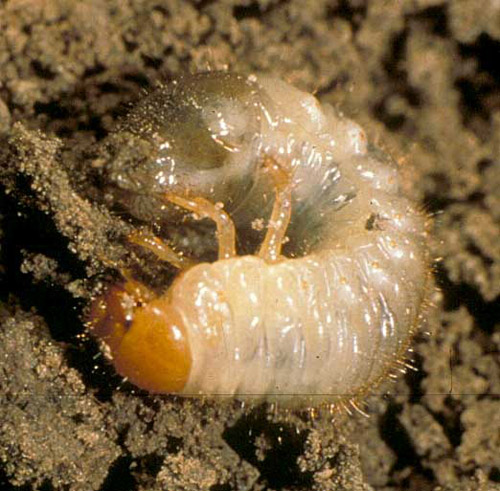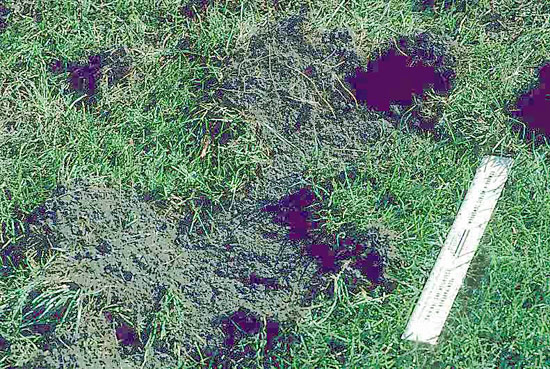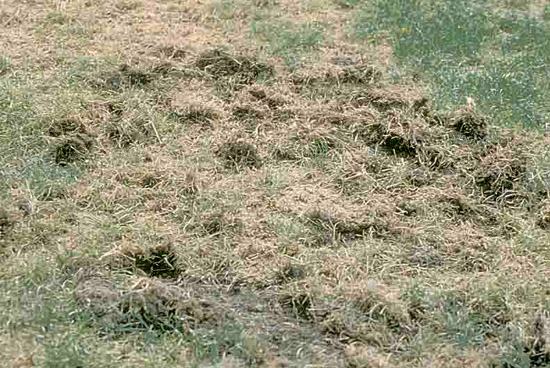Issue 13, July 30, 2012
White Grubs
White grubs should be hatching or have hatched throughout the state. Our normal first date for determining grub numbers through scouting is around August 6. However, adults emerged ten to fourteen days early this year, so all of the eggs should have hatched. Fewer people appear to be irrigating their lawns this year, so the grubs will be concentrated in the few highly irrigated turf areas. In Issue 11 of this newsletter published on July 2, I shared some data explaining the lack of grubs in hot, dry turf.
Scout for white grubs by using a sharp, heavy knife to cut through the thatch and pull up a square foot of turf. Count the number of grubs in the root zone by looking for those exposed on the soil surface, ones hanging in the roots, and those popped out by using the knife to till the underlying three to four inches of soil. If there are fewer than ten per square foot, treatment should not be necessary. However, raccoons, skunks, and birds will tear up the turf, seeking the grubs as food. Grub numbers as low as three per square foot have been known to attract them. Areas with high numbers of these animals may require treatment to avoid damage.

White grub larva.
Raccoon damage appears during the night as strips of sod (6 inches to 1 foot wide) pulled back to expose the grubs. Their damage is very obvious and impressive. Skunks also go after grubs at night. They open circular holes about 3 inches in diameter through the thatch. A single skunk makes about 100 of these holes per night. Insectivorous birds such as starlings and robins scratch open the soil to expose the grubs, causing brown, rough areas.

Raccoon feeding damage to turf.

Skunk feeding damage to turf.
The treatment of choice for grubs at this time of year is trichlorfon, sold as Dylox, or chlorantroniliprole, sold as Acelepryn. They kill the grubs within three to five days. Irrigation a day or two before insecticide application brings the grubs closer to the surface, resulting in better control. (Phil Nixon)
Author:
Phil Nixon